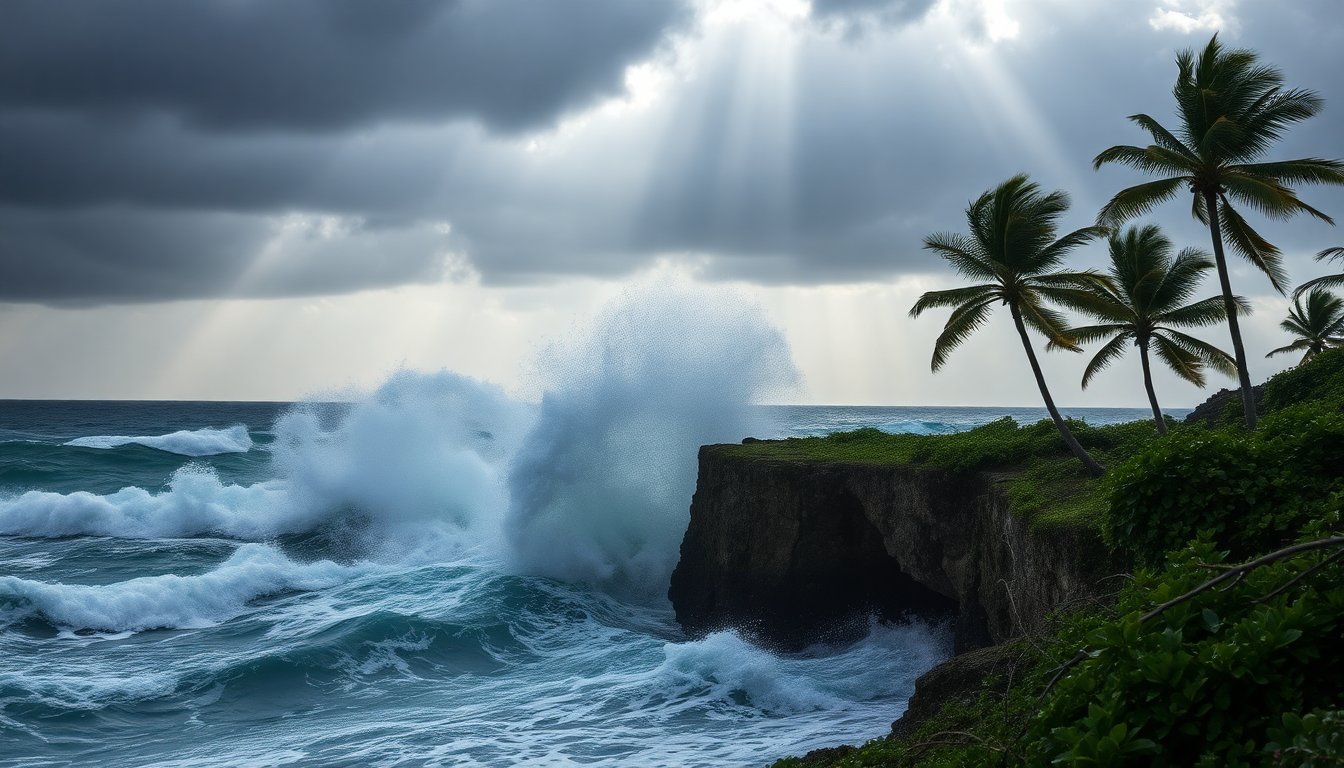Table of Contents
As the Caribbean braces for severe weather, tropical storm Melissa has officially escalated into a hurricane, prompting urgent warnings from U.S. meteorologists. The storm is currently wreaking havoc in the northern Caribbean and is expected to bring catastrophic rainfall and high winds, putting several islands on high alert.
The National Hurricane Center reported that Melissa reached hurricane status with sustained winds of 75 mph and is predicted to continue intensifying. Projections indicate it may escalate to a major hurricane by the end of the weekend, creating an increasingly precarious situation for those in the storm’s path.
Impact on Jamaica and neighboring regions
Jamaica is under a hurricane warning, which means that wind speeds of at least 119 km/h are anticipated within the next 36 hours. The storm’s slow movement raises concerns about prolonged exposure to damaging winds and heavy rainfall.
Meteorologists forecast that Jamaica could receive up to 25 inches (approximately 64 centimeters) of rain, an amount that could lead to severe flooding.
Warnings and preparations in Jamaica
In response to the looming threat, Jamaican authorities have activated over 650 emergency shelters, ensuring residents have safe havens.
Prime Minister Andrew Holness has urged citizens to take the hurricane warning seriously, emphasizing the importance of preparation. “We must protect ourselves against this impending disaster,” he stated.
All airports will close within 24 hours of a hurricane warning, and essential supplies are being distributed to ensure communities are well-equipped to handle the storm’s impact.
The Prime Minister has highlighted the urgency of finalizing preparations, as the storm’s effects could be dire.
Threats to Haiti and the Dominican Republic
Alongside Jamaica, neighboring Haiti and the Dominican Republic are also bracing for the storm’s impact.
Reports indicate that the storm has already claimed lives, with at least three fatalities in Haiti and one in the Dominican Republic. The regions are under similar forecasts, predicting devastating rains of up to 35 inches (89 centimeters) in some areas, leading to life-threatening flooding and potential landslides.
Community response and challenges
Local officials in Haiti have noted rising river levels and significant flooding, particularly in the Tiburon peninsula region. As communities prepare for the worst, there is a palpable sense of anxiety among residents. Many are hesitant to evacuate their homes due to concerns over safety and access to resources.
The storm’s slow trajectory poses additional challenges, as it may linger over these regions for several days, prolonging the threat of severe weather. The Haitian director of civil protection, Ronald Delice, has highlighted the urgent need for food distribution and emergency supplies as flooding disrupts daily life.
Future projections and concerns
Forecast models suggest that as Melissa progresses, it could impact eastern Cuba by early Wednesday, with up to 12 inches (30 centimeters) of rain expected in some regions. The Bahamas and other islands in the Central Caribbean may also experience tropical storm conditions as the storm continues its path.
This hurricane season has been marked by unusual activity, with Melissa being the 13th named storm to emerge since June. The National Oceanic and Atmospheric Administration has predicted a busy season, potentially exceeding 18 named storms. This uptick in storm activity has raised concerns among meteorologists about the implications of climate change, which may be contributing to the rapid intensification of these weather events.
The National Hurricane Center reported that Melissa reached hurricane status with sustained winds of 75 mph and is predicted to continue intensifying. Projections indicate it may escalate to a major hurricane by the end of the weekend, creating an increasingly precarious situation for those in the storm’s path.0





